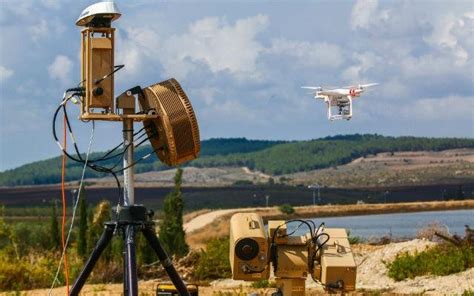Recent discussions in conservative media, including a segment by Glenn Beck on The Glenn Beck Program, have highlighted a transformative shift in modern warfare driven by Ukraine’s innovative use of drone strikes. According to Beck, Ukraine’s deployment of advanced drone technology in its conflict with Russia has “changed everything about warfare,” raising critical questions about the potential adoption of these tactics elsewhere, including in the United States, and how such threats could be detected and prevented.
A New Era of Warfare
The ongoing war in Ukraine has showcased the devastating effectiveness of drones, particularly in precision strikes and asymmetric warfare. Low-cost, commercially available drones equipped with advanced sensors and explosives have enabled Ukraine to target Russian military assets with unprecedented accuracy and minimal risk to personnel. These unmanned systems, often operated remotely or autonomously, have disrupted traditional battlefield dynamics, allowing smaller forces to challenge larger, better-equipped adversaries.
Beck’s analysis emphasizes that drones have democratized warfare, making sophisticated attacks accessible to non-state actors and smaller nations. This shift reduces reliance on expensive conventional weapons like tanks or fighter jets, fundamentally altering how conflicts are waged. The ability to deploy swarms of drones, coordinate attacks via satellite networks, and strike deep into enemy territory has turned the humble drone into a game-changer.
Could These Tactics Be Used in the U.S.?
The implications of Ukraine’s drone tactics extend far beyond Eastern Europe. Experts warn that the accessibility of drone technology poses a growing risk for domestic security in the United States. Commercially available drones, which can be modified with off-the-shelf components, could be weaponized by hostile actors, including terrorists, rogue groups, or even state-sponsored operatives. The low cost and ease of use make drones an attractive tool for asymmetric attacks on critical infrastructure, public events, or government facilities.

The Department of Homeland Security (DHS) and the Federal Aviation Administration (FAA) have already flagged drones as a potential threat to national security. Incidents such as unauthorized drone sightings near airports, military bases, and urban areas underscore the vulnerability of U.S. airspace. A 2023 FAA report noted over 1,000 drone-related incidents annually, with a small but growing number involving malicious intent. The adaptability of drone technology, as demonstrated in Ukraine, suggests that adversaries could replicate these tactics to disrupt power grids, communication networks, or public safety.
Detecting and Preventing Drone Threats
Addressing the potential misuse of drones requires a multi-faceted approach, combining advanced technology, regulatory measures, and public awareness. Here are key strategies to detect and prevent drone-based threats in the U.S.:
- Enhanced Detection Systems: Counter-drone technologies, such as radar, radio frequency (RF) sensors, and electro-optical systems, can detect unauthorized drones in restricted airspace. Companies like Dedrone and AeroDefense are developing solutions that integrate with existing security infrastructure to identify and track rogue drones in real time. Deploying these systems around critical sites, such as power plants, airports, and government buildings, is essential.
- Regulatory Frameworks: The FAA’s Remote ID rule, implemented in 2023, requires drones to broadcast identification and location data, akin to a digital license plate. Strengthening enforcement of this rule and expanding no-fly zones around sensitive areas can deter malicious drone activity. However, critics argue that these regulations may not deter determined bad actors who can bypass Remote ID systems.
- Electronic Countermeasures: Jamming or spoofing technologies can disrupt a drone’s communication with its operator or GPS navigation. The U.S. military and law enforcement agencies are testing systems like the DroneDefender, which uses directed energy to disable drones without causing collateral damage. However, such measures must be carefully managed to avoid interfering with legitimate communications.
- Public-Private Partnerships: Collaboration between government agencies, tech companies, and local law enforcement is critical. Programs like the DHS’s Counter-UAS Technology Demonstration encourage innovation in anti-drone solutions. Local communities, including those in Florida, could benefit from pilot programs to test drone detection systems tailored to urban or rural environments.
- Public Awareness and Training: Educating the public about the risks of unauthorized drones and encouraging the reporting of suspicious activity can enhance early detection. Training local law enforcement to recognize and respond to drone threats is equally vital, particularly in areas with high-profile events or infrastructure.
Challenges and Ethical Considerations
While counter-drone measures are essential, they raise concerns about privacy, cost, and scalability. Widespread surveillance to detect drones could infringe on civil liberties, particularly if facial recognition or other invasive technologies are employed. Additionally, deploying advanced counter-drone systems nationwide could strain municipal budgets, especially for smaller communities. Balancing security with affordability and ethical governance will be a key challenge for policymakers.
Looking Ahead

The evolution of drone warfare, as highlighted by Glenn Beck and exemplified by Ukraine’s tactics, underscores the urgency of preparing for emerging threats. While the U.S. has robust defense capabilities, the democratization of drone technology demands proactive measures to safeguard against misuse. By investing in detection systems, strengthening regulations, and fostering collaboration, the U.S. can mitigate the risks of this new era of warfare.
For residents of Florida, staying informed about local security initiatives and advocating for responsible drone policies can help ensure community safety. As warfare continues to evolve, so too must our strategies to protect the homeland from threats both foreign and domestic.



